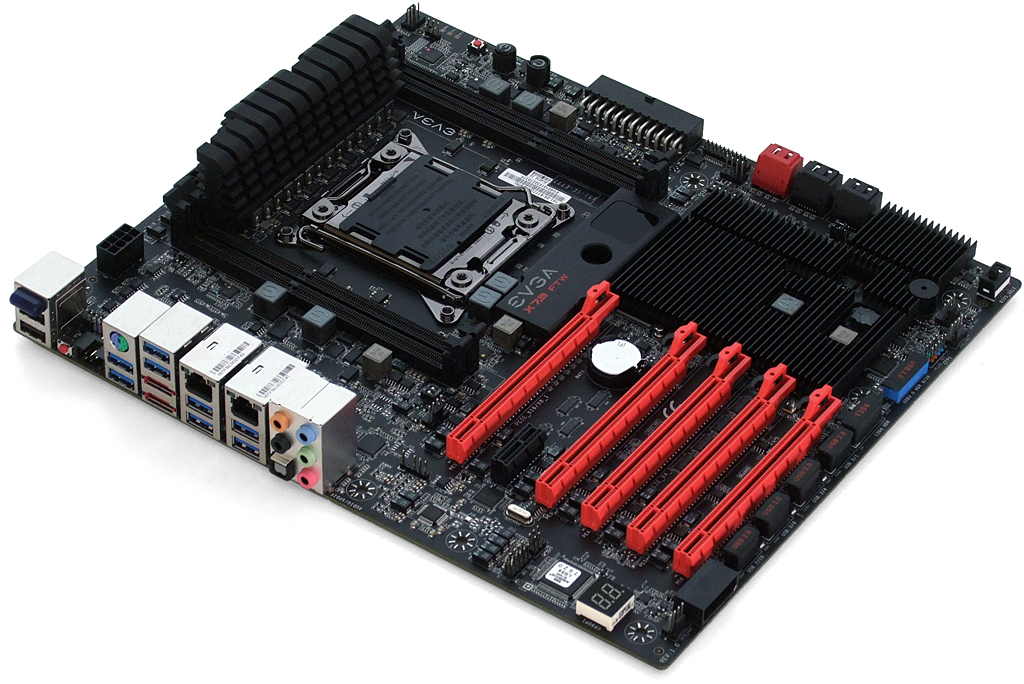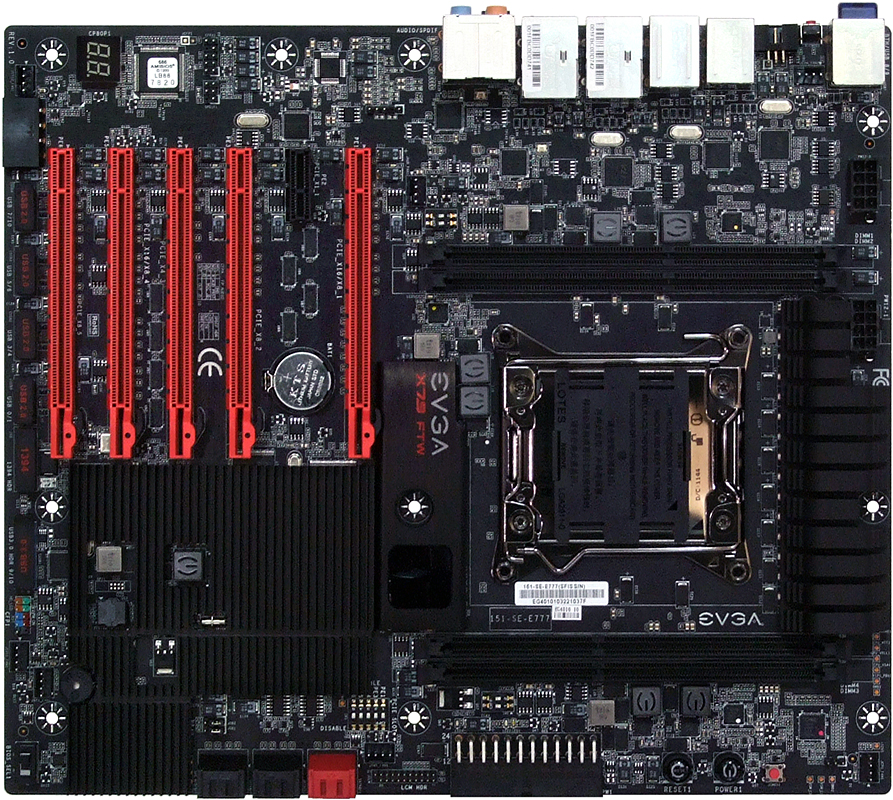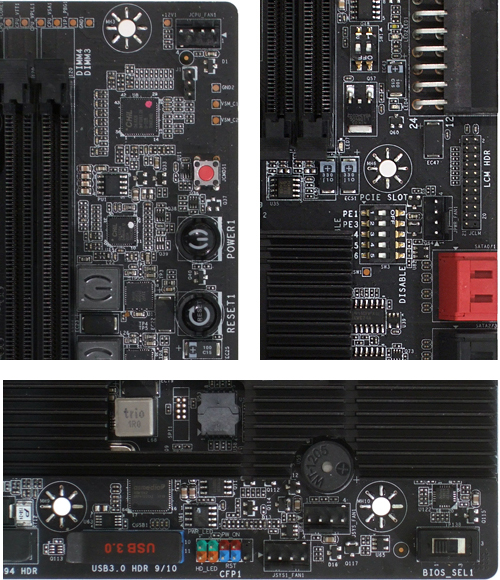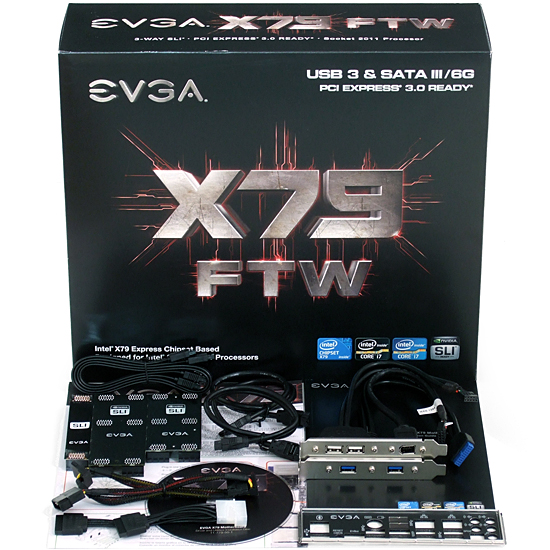Overclocking: Asus Rampage IV Extreme Versus EVGA X79 FTW
Many companies claim to offer the best overclocking for your money, yet only two compete for the best overclocking at the very highest price point. Today we put those claims to the test, including a full set of benchmarks to analyze performance gains.
EVGA X79 FTW
EVGA’s X79 FTW gives users dual gigabit Ethernet controllers for around $20 less than its competitor in today’s article, but makes up the cost difference by dropping other features that Asus offers. As an example, its $100 EVBot handheld overclocking tool probably costs more to produce than Asus’ OC Key, but EVBot must be purchased separately.
EVGA’s I/O panel has twice as many USB 3.0 ports. But all eight of these ports share a single 5 Gb/s PCIe link through a single controller and two four-port hubs.
Also noteworthy on the I/O panel is the connector for the previously-mentioned and separately-sold EVBot overclocking controller.
Unlike its competition, all five of the X79 FTW’s x16-length slots can be used at the same time. The first and fourth long slots are true x16 parents that donate eight of their lanes to the second and fifth when they're populated. The third x16 slot is only wired up to run at x4 data rates, but isn’t tied to any sharing system.
We began to wonder why the middle slot hosted four lanes instead of the available eight, like many less expensive boards include, when we discovered that the unsanctioned Intel SAS controller was enabled in Windows' Device Manager. This controller adapts four of the CPU's PCIe lanes to four SAS or SATA ports on certain unsanctioned motherboard designs. Compatibility isn’t an issue, though, since EVGA doesn’t actually expose the ports on this motherboard. But enabling the Storage Controller Unit makes four of the processor’s 40 PCIe 3.0 lanes disappear.
Other unusual or problematic design decisions include a forward-facing power connector, center/rear-edge front-panel audio connector, a single USB 3.0 connector along the bottom edge, and a 13-pin IEEE-1394b internal header with no external port. Of these, the forward-facing power connector will turn into a wonderful opportunity for clean cable routing if your optical drives don't block off the interface.
Installing a card in the second slot for three-way SLI in x8-x8-x16 mode almost requires that you crush the front-panel audio connector's wires. Moving the cards to avoid this issue forces x16-x4-x8 mode with no clearance for the inflexible USB 3.0 cable end. EVGA’s competitor faces a similar issue in regard to its bottom USB 3.0 header, but adds a second USB 3.0 connector in a more accessible location. This is also not a four-way SLI design, though that configuration might be possible by using at least one single-slot card and a bunch of flexible bridges.
Get Tom's Hardware's best news and in-depth reviews, straight to your inbox.
Overclocking-oriented features include two rows of voltage detection points near power, reset, and CLR_CMOS buttons, DIMM and PCIe slot disabling switches, and a three-way CMOS selector switch. One of the CMOS ICs is even replaceable, just in case an enthusiast figures out how to screw up all three chips.
Flexibility is the theme of the X79 FTW’s installation kit, since it includes two round and two flat SATA cables, two styles of four-pin to SATA power adapter cables, and three-way SLI bridges with two different configurations. We were a little confused that a company would bother adding a FireWire 800 controller to a motherboard that had no I/O panel ports for it, and even more confused to find that the included break-out cable supports only FireWire 400.
Current page: EVGA X79 FTW
Prev Page Rampage IV Extreme Software Overclocking Next Page X79 FTW Firmware Overclocking-
EzioAs Nice article.Reply
Where is the MSI Big Bang Xpower II? That's known to be a great board for overclocking as well. -
schn1tt3r I'd love to see a comparison like this between the Rampage IV Extreme and the Rampage IV Formula. The price difference is over $100 and I don't see WHY. 8 RAM slots is something I would never fill up so the Formula and its 4 slots seems perfect to me.Reply -
hellfire24 i would take rampage iv formula.it's cheaper and provides similar features.who needs 4-way sli?Reply -
Crashman WR2Kind of a lukewarm recommendation. Just 'Tom's Hardware Approved award'Only because there aren't many readers who can get $50 of value out of its specific feature set, compared to the WS.Reply -
halcyon I wish I hadn't seen this. I really do. I have no excuse to get an X79 based system. I don't. I..do...not. I want. ...but I can't. Food. Food is important.Reply -
master9716 You guys really need to start Testing @ 5760x1080 !!! , Monitors go for really cheap on craiglist now from wholesellers , you can buy 3 24" leds for like 300 bucks so a lot of people that I know have been runing 3 monitor setups for a while.Reply -
jaquith Thanks Thomas for another enlightening Article! :)Reply
Just knowing the ASUS and EVGA from past history (LGA 1366) which may or may not play any role here, ASUS tends to (lets call it adjust) the CPU vCore and VTT/VCCSA higher than advertised vs EVGA which probably explains* the problems with both the high frequency RAM and CPU OC's.
The disturbing thing to 'me' was the regulator voltages. I know the EVGA uses 12+2 vs ASUS's 8+3+(2+2) PWM and it's all digital controlled on ASUS, (*)but IDK if the EVGA is digitally controlled which might explain the inefficiency and OC.
The EVGA has always been a very 'manual' MOBO, so in that regard I'm not surprised you had to dive into the BIOS. I have no doubts if you raised the EVGA's voltages vs a cloned ASUS optimized OC set that you'd have no problems obtaining the SAME 4.8GHz OC. Both boards offer voltage check points and I'd be very interesting how they compared.
Just the other day I updated my ASUS BIOS and right-off I noticed an increased vCore increase by +0.01v~+0.015v and as part of the documented (improvements) was 'Improved Stability' ; yeah sure if you raise the vCore or VTT/VCCSA, phase, etc profiles... Now I have to redo my validations.
The most important testing here, to me, is the Baseline Comparison which tells me EVGA has some work to do ASAP, and hopefully a BIOS update can close the gaps. Further, personally I won't buy or recommend any X79 MOBO unless it offers an 8xDIMM option. In the forum it's been very clear which X79's I recommend since day one, and the ASUS R4E has always been on top on my list if you can afford it! ;) -
spookyman Considering Ivy Bridge is around the corner. Would it be beneficial in buying a Sandy Bridge-E board?Reply




